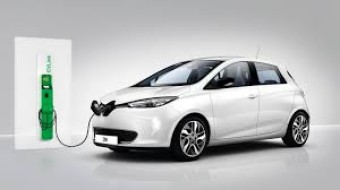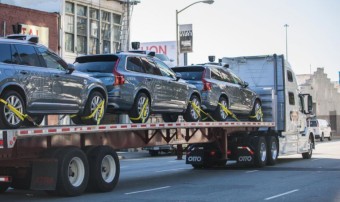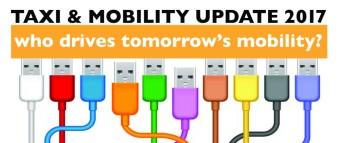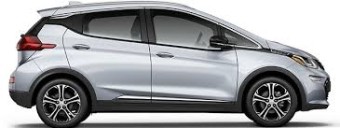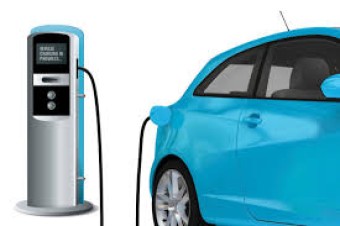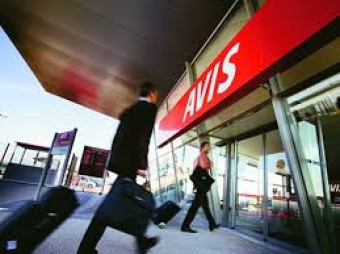‘Unsustainable?’ investigates the growth of TNC’s on traffic, travel and the future of New York City
Over the last four years, Uber, Lyft and other app-based ride services have put 50,000 vehicles on the streets of New York City. Customers embraced these new services as offering a prompt, reliable and affordable option for
traveling around town. Their growth also raises questions about their impacton traffic congestion and on public transit and taxi services that are essential components of urban transportation networks. A dearth of factual information has made it difficult, however, to assess their role in the city’s transportation network or decide whether a public policy is needed.
In his report ‘Unsustainable – The growth of app-based services and traffic, travel and the future of New York City, consultant Bruce Schaller presents a detailed analysis of the growth of app-based ride services in New York City, their impacts on traffic, travel patterns and vehicle mileage, and implications for achieving critical city goals for mobility, economic growth and environmental sustainability in New York and other major cities. Findings are based on trip and mileage data that are uniquely available in New York City, providing the most detailed and comprehensive assessment of these new services in any U.S. city.
As Uber and Lyft expanded to cities across the country, they promised benefits to all. Passengers would get a quick, convenient alternative to the hide-bound taxi industry. Shared rides would replace solo drivers, reducing congestion. Uber promised to take “1 million cars off the road in New York City and help eliminate our city’s congestion problem for good.” Lyft promised reductions in carbon footprint from people driving alone.
Customers embraced the new on-demand services, saying they saved time, reduced stress and offered affordable fares. But with over 50,000 on-demand ride service vehicles now on New York City streets, it’s a good time to take a look at the explosive growth of these new companies, also called Transportation Network Companies (TNCs), and their impact on critical City goals for mobility, economic growth and environmental sustainability.
In most of the country, this question is hard to answer because these privately held companies closely guard data on their operations. Uniquely in New York City, because TNCs are required to submit trip records and mileage data is available from mandated vehicle inspections, we finally have the data to see how these promises are working out.
What do these data show?
- Initially, on-demand companies grew mostly by attracting yellow cab passengers. A January 2016 report from Mayor de Blasio concluded that the growing number of Uber and Lyft trips was not the primary cause of worsening congestion in the Manhattan Central Business District.
- Since June 2015, however, TNC passenger volumes have tripled, to 500,000 riders per day. TNC growth far outpaced the drop in yellow cab rides, leading to large additions in overall taxi/for-hire ride volumes.
- As a result of growing trip volumes, TNCs added 600 million miles of driving to city streets in 2016 — more than total yellow cab mileage in Manhattan.
- Most of the added driving is in Manhattan and congested parts of Brooklyn and Queens near the East River, where streets have the least ability to accommodate additional traffic. TNCs added an estimated 7 percent to existing miles driven by all vehicles in these congested areas from 2013 to 2016.
- Since mid-2015 TNCs have offered and heavily promoted “pooled” options such as UberPool and LyftLine. TNC mileage nonetheless continued to grow rapidly because exclusive-ride trips still predominate, and because most TNC customers are coming from transit, walking and biking. Migration from these modes translates to increased mileage even if TNC rides are shared.
The growth of on-demand ride services is also working to undercut the essential role of mass transit in absorbing growth in residents, workers and visitors. In the two decades before the arrival of TNCs, transit served the growth in travel from new residents and workers throughout the city. That meant the city could grow sustainably — without adding to congestion, slowing commerce, diluting air quality or adding to greenhouse gas emissions.
Since 2013, however, this picture has changed. TNC ridership growth has accelerated at the same time that subway and bus ridership began to decline. As a result, TNCs are now the leading source of growth in non-auto (i.e., non-personal car) travel in New York City.
A continuation of TNC-led growth in travel is not sustainable for a growing New York. Adding TNC mileage to already-congested streets will lead to mounting costs for businesses and consumers from increasing traffic delay and hinder progress toward the City’s goals for mobility, economic growth and the environment.
The central task for public policy is to shift growth back to sustainable, high-capacity modes, ranging from bus to subway to biking, while at the same time maintaining the mobility improvements that TNCs offer.
The report discusses how city and transit officials can make buses and subways a competitive choice when up against the deep-pocketed, nimble and aggressively customer-focused TNCs. These include short-term initiatives such as count-down clocks, bus lanes and traffic signal retiming and major capital projects such as installation of new subway signal systems.
The report also discusses the inevitable need for road pricing as TNC fare reductions begin to erase longstanding financial disincentives for traveling by motor vehicle in congested areas of the city.
These initiatives are urgently important to head off continued shift of travel from transit to TNCs, and are far more critical than headline-grabbing but low-ridership distractions like the LaGuardia AirTrain and BQX streetcar.
The report also lays out implications for other large cities that have experienced rapid growth in on-demand ride services. The findings show how the growth of on-demand services are becoming central to changes in how people travel within dense urban areas, the effects on travel and transit, and the need for a strong data-driven public policy response that incorporates street management, transit services and road pricing.
- There is a need to make New York City buses and metros a competitive choice again.

